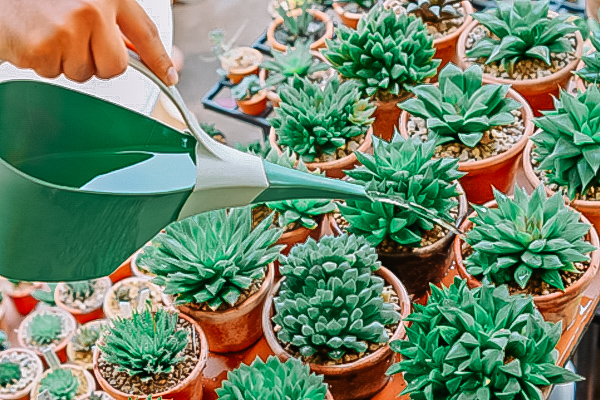Exploring the Cactus & Succulent Society of San Jose: Everything You Need to Know

The Cactus & Succulent Society of San Jose (CSSSJ) is a vital hub for enthusiasts and collectors of cacti and succulents. This society is dedicated to promoting the appreciation, cultivation, and conservation of these fascinating plants. Whether you’re a seasoned gardener or a newcomer to the world of cacti and succulents, the CSSSJ offers valuable resources, community engagement, and expert advice.
This in-depth guide explores everything you need to know about the Cactus & Succulent Society of San Jose. From the society’s history and benefits of joining, to plant care tips, propagation techniques, and community events, this post will provide you with comprehensive knowledge on how to thrive in the world of cacti and succulents.
What is the Cactus & Succulent Society of San Jose?
Overview of the Society
The Cactus & Succulent Society of San Jose (CSSSJ) is a nonprofit organization founded to foster a community of people who share an interest in growing, cultivating, and preserving cacti and succulents. The society offers a platform for people to meet, exchange tips, and support each other in their gardening endeavors. Established over 50 years ago, the CSSSJ is one of the most influential societies for cactus and succulent enthusiasts in California.
The Mission and Vision of CSSSJ
The CSSSJ aims to increase awareness about the beauty and diversity of cacti and succulents while promoting conservation and sustainable gardening practices. Through educational programs, plant shows, and community outreach, the society plays a vital role in helping both beginner and experienced gardeners succeed with their plant collections.
Community and Networking Opportunities
Becoming a member of the CSSSJ opens doors to a welcoming community of like-minded plant lovers. Members can participate in plant exchanges, attend special events like plant sales and workshops, and connect with experts in the field. The society also provides networking opportunities, allowing members to learn about new varieties, share propagation techniques, and exchange advice on plant care.
The Benefits of Joining the Cactus & Succulent Society of San Jose
Exclusive Access to Plant Sales
One of the major advantages of joining the CSSSJ is exclusive access to plant sales. These events are held throughout the year and offer members the chance to purchase a variety of cacti and succulents, including rare and hard-to-find species. If you’re looking to expand your collection, this is a great opportunity to obtain plants directly from fellow members or trusted nurseries.
Educational Workshops and Seminars
The CSSSJ offers numerous educational workshops and seminars that focus on everything from basic cactus and succulent care to advanced propagation techniques. These workshops provide members with the skills and knowledge necessary to keep their plants healthy and thriving.
- Basic Care: Learn the essentials of watering, potting, and soil selection.
- Propagation Techniques: Master the art of growing new plants from cuttings and seeds.
- Pest Control: Understand how to handle common pests and diseases that affect cacti and succulents.
A Strong Supportive Community
By joining the CSSSJ, you’re becoming part of a vibrant, supportive community. Whether you have a question about plant care or want to discuss a new variety, the society’s members are always eager to help. Through monthly meetings, online forums, and social media groups, CSSSJ fosters a collaborative environment where everyone’s expertise is shared.
Popular Cacti and Succulent Varieties in San Jose
Cacti Species Found in San Jose
San Jose, with its Mediterranean climate, is home to a variety of cacti that thrive in its dry, sunny conditions. Some of the most popular cacti species in the area include:
- Echinocactus grusonii (Golden Barrel Cactus)
- Opuntia ficus-indica (Prickly Pear)
- Trichocereus pachanoi (San Pedro Cactus)
These cacti are known for their striking appearance, resilience, and ability to thrive in the dry conditions of California.
Succulent Varieties in San Jose
Succulents are equally popular in San Jose, where they’re often used in drought-tolerant gardens. Some of the best-known succulent species include:
- Aloe Vera: Known for its medicinal properties and striking green leaves.
- Agave: Offers a sculptural look and thrives in dry conditions.
- Echeveria: Popular for its beautiful rosette shape and wide range of colors.
These succulents add a unique aesthetic to both private gardens and public spaces across San Jose.
Rare and Unusual Cacti and Succulents
The CSSSJ is also home to rare and unusual cacti and succulent species that are prized by collectors. Some examples include:
- Ariocarpus fissuratus (The Living Rock Cactus)
- Astrophytum asterias (Star Cactus)
These rare species are often the focus of special conservation efforts and are showcased during plant exhibitions hosted by the society.
How to Care for Cacti and Succulents
Watering and Soil Needs
Cacti and succulents have specific water and soil requirements. Understanding these basics is crucial to their survival and growth.
- Watering: Water your plants deeply but infrequently. Allow the soil to dry out completely between waterings.
- Soil: Use well-draining soil, such as a cactus mix or a mixture of sand, perlite, and potting soil. Ensure the pot has good drainage.
Light and Temperature Conditions
Cacti and succulents thrive in bright, indirect light and warm temperatures. San Jose’s sunny climate is perfect for these plants, but care should be taken to avoid placing them in full, harsh sun for long periods to prevent sunburn.
- Ideal Temperature: Most cacti and succulents prefer temperatures between 60°F (16°C) and 90°F (32°C).
- Lighting Needs: Ensure they get 4–6 hours of bright, indirect sunlight each day. If grown indoors, consider using grow lights during the winter months.
Seasonal Care and Maintenance
During summer, cacti and succulents grow actively and require more water and light. In winter, these plants often go dormant, requiring minimal water. Adjust care based on the seasons to help your plants thrive year-round.
Propagation Methods for Cacti and Succulents
Leaf Cuttings and Stem Cuttings
One of the most popular methods of propagation for succulents is cuttings. Here’s how to propagate them successfully:
- Leaf Cuttings: Snip a healthy leaf from the plant, allow it to dry for a few days, and then plant it in soil.
- Stem Cuttings: Cut a healthy stem and let it callous for 2-3 days before planting it in soil.
Offsets and Pups
Many succulents, including Aloe Vera and Echeveria, produce offsets or pups. These small plants can be separated from the parent plant and replanted in a new pot.
- Timing: Propagate pups during the plant’s active growing season, typically in spring or early summer.
- Care: Give the pups time to develop roots before transferring them to a new container.
Seed Propagation
For those looking for a challenge, seed propagation is an option. While it’s slower, it can be very rewarding.
- Germination: Place seeds in a shallow tray with a light, well-draining medium. Keep the tray in a warm, humid environment until the seeds sprout.
- Transplanting: After the seedlings grow large enough, transplant them into individual pots.
Common Pests and Diseases of Cacti and Succulents
Identifying Pests
Cacti and succulents can fall prey to several pests, but with the right care, they can be managed. Common pests include:
- Mealybugs: Tiny, white insects that appear as cotton-like clumps on the plant.
- Aphids: Small, green insects that may cause leaves to curl or distort.
- Spider Mites: Tiny, web-producing insects that cause leaves to yellow and drop.
Fungal and Bacterial Infections
Overwatering and poor air circulation can lead to fungal and bacterial infections. Powdery mildew and root rot are common problems.
- Prevention: Avoid wetting the plant’s foliage and ensure the soil is well-draining.
- Treatment: Use fungicides or treat the plant with natural solutions like neem oil.
Natural Pest Control Methods
Use natural pest control methods to reduce the impact of pests and diseases:
- Insecticidal soap: A mild treatment to manage pests without harming the plant.
- Rubbing alcohol: Dab it on a cotton swab and apply it directly to pests like mealybugs.
Seasonal Care for Cacti and Succulents in San Jose
Summer Care
During San Jose’s hot summer months, cacti and succulents flourish. However, it’s crucial to adjust watering and placement during this time:
- Watering: Increase watering frequency, but always ensure the soil dries between waterings.
- Sunlight: Provide shade during the hottest hours of the day to prevent sunburn.
Winter Care
In winter, many cacti and succulents enter a dormant phase and need less water and attention.
- Watering: Cut back on watering to prevent over-watering, which can lead to root rot.
- Location: Move potted plants indoors or place them in a sheltered spot to avoid frost.
Spring and Fall Care
These seasons are perfect for plant propagation and repotting. Provide ample sunlight and moderate watering as the plants become more active.
How to Integrate Cacti and Succulents into Your Garden Design
Designing a Drought-Tolerant Landscape
Cacti and succulents are ideal for drought-tolerant landscaping, making them a perfect choice for water-conscious gardeners in San Jose. Use a mix of colors, textures, and forms to create a low-maintenance garden.
- Incorporate Rocks: Build a rock garden that mimics the desert landscape.
- Layering: Layer succulents with different growth habits to create visual interest.
Vertical Gardening with Succulents
For those with limited space, vertical gardening is an excellent way to display cacti and succulents.
- Wall Planters: Use wall-mounted planters to display trailing succulents like Sedum.
- Hanging Baskets: Create stunning cascading effects with Echeveria and Crassula.
Xeriscaping with Cacti and Succulents
Xeriscaping is a landscaping method that uses drought-resistant plants, like cacti and succulents, to create water-efficient gardens.
- Succulent Borders: Use succulents as borders to add structure and reduce the need for irrigation.
- Mulching: Use gravel or rocks to retain moisture and keep the soil cool.
Rare and Endangered Cacti and Succulents in San Jose
Conservation Efforts by the CSSSJ
The Cactus & Succulent Society of San Jose is deeply involved in the conservation of rare and endangered species. Many cacti and succulents are at risk due to habitat loss, over-collection, and climate change.
- Astrophytum asterias (Star Cactus)
- Ariocarpus fissuratus (Living Rock Cactus)
How to Support Conservation
- Donate to conservation efforts led by the CSSSJ.
- Buy responsibly: Avoid purchasing plants from illegal or unethical sources.
Protecting Native Species
The society also works to protect California’s native cacti and succulents, ensuring they thrive for generations to come.
FAQs about the Cactus & Succulent Society of San Jose
1. How do I become a member of the CSSSJ? You can join the CSSSJ through their official website, where you’ll find membership forms and details about benefits.
2. When are the plant sales held? CSSSJ plant sales are held regularly, typically during the spring and fall. Check their website or social media for upcoming events.
3. What are the membership fees? Membership fees vary depending on the type of membership (individual, family, or lifetime). Details are available on the CSSSJ website.
4. Can I attend events if I’m not a member? Non-members can often attend events, but members receive exclusive access to certain workshops and sales.
5. Are there any age restrictions to join? There are no age restrictions. The society welcomes plant enthusiasts of all ages.
Conclusion
The Cactus & Succulent Society of San Jose is an invaluable resource for plant lovers in the region. Whether you’re looking to learn more about plant care, find rare species, or connect with fellow enthusiasts, the CSSSJ offers something for everyone. Through its educational programs, conservation efforts, and strong community, the society helps promote a greater appreciation for the unique beauty and resilience of cacti and succulents. Joining the CSSSJ is a step toward expanding your knowledge and cultivating your passion for these incredible plants.






